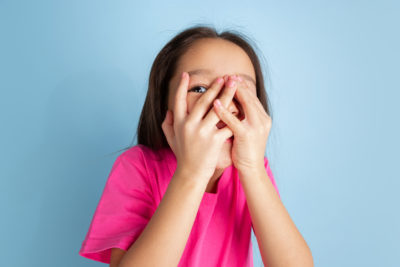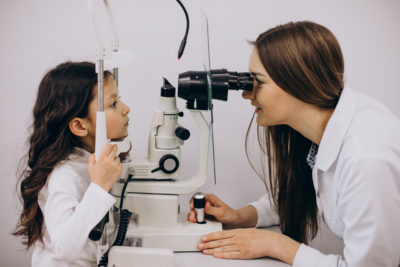Conjunctivitis is an eye condition, also referred to as ‘pink eye.’ The cases of eye infection in 2023 have increased during monsoon – approximately three times higher than usual cases. Medical professionals say that the pink eye infection in 2023 is more severe. So, it would be best if you take the necessary preventive measures to alleviate the symptoms of this eye infection.
What is seasonal allergic conjunctivitis?
Sometimes referred to as “hay fever eyes,” seasonal conjunctivitis is the inflammation of Conjunctiva – a thin layer of transparent skin covering the white portion, ‘Sclera’ of the eyeball and inner surface of the eyelids. The eye infection is triggered by seasonal allergens, namely pollen, animal dander and others, leading to red eyes. This is different from ‘Perennial allergic conjunctivitis’ that occurs in response to dust mites and animal dander. Some children and their relatives may have one or other genetically predisposed seasonal allergic rhinitis, asthma, eczema.
Common symptoms of conjunctivitis in children
Your child may complain of ocular itching, redness of eyes, watering from eyes along with whitish mucous or ropy discharge. Some children may complain of dryness, burning sensation, pricking, and photophobia. The symptoms of conjunctivitis in children will vary from child to child. It is also important to note that your child will not display all these eye infection symptoms at once, but a combination of a few.
Preventing seasonal allergic conjunctivitis
To effectively manage conjunctivitis in children, you will need to begin by reducing the amount of pollen exposure. Making some environmental and lifestyle modifications in your child’s life can certainly help decrease recurrences. Here are a few key points to keep in mind while preventing seasonal allergic conjunctivitis.
Reduce pollen exposure
– As mentioned before, one of the biggest catalysts of conjunctivitis in children is pollen allergy. Pollen levels tend to be higher in the morning and towards early evening. Ensure your little one avoids outside activities during this time, and mitigate the risk of eye infection.
Keep a watch on the weather
– Seasonal allergic conjunctivitis also tends to spread more in warm, dry weather rather than during the rainy season or cooler temperatures. This change in weather also causes pollen to spread quicker increasing your child’s chances of getting infected. Err on the side of caution by keeping the windows and doors of your home closed as much as possible, as well as the windows of your car as well. Be sure to check out our website karthiknetralaya.com for a guidline article on Allergies and eye.
Change clothes often
– Pollen differs in form and size and ranges from a fine to coarse powdery substance. Because of this, pollen is capable of sticking to your child’s clothes. If your child has spent some time outdoors, ensure they change their clothes immediately upon return. Wash their hands and face as soon as they return home to prevent the symptoms of pink eye infection.
Be cautious around pets
– Your cats, dogs, and other pets sould carry lot of pollen in their fur. To prevent the spread of conjunctivitis in children, restrict your pets’ entry into your little one’s bedroom.
Use sunglasses
– If your child will be spending time outdoors, wearing sunglasses is an effective barrier against allergens.
Switch to air conditioners
– Air conditioners reduce indoor moisture and are preferred over room or window coolers. Window coolers also bring in pollen from outside. In severe multiple allergies, use indoor Hepa filter units, that filterout all dust in the room. Air purifiers with HEPA filters arrest almost 99% of allergens and are very effective against the spread of pollen.
Don’t clean with your child in the room
– Avoid dry mopping or sweeping the floor when your child is present in the room. Opt for wet mopping is instead. Similarly wiping with a damp cloth is preferred instead of dusting with a dry cloth. Vacuum cleaner is better, as it sucks dust, instead of raising it into the air, but ensure a proper filter is installed at the air outlet. Keep surroundings clean – Bedsheets, pillow covers, curtains, foot rugs, carpets should be periodically washed & sun dried. Moist walls in bathrooms encourage mould formation. Be sure to repair all the moist walls and leaky places in roofs and walls.
Some handy tips to counter conjunctivitis in children
In addition, supportive measures like cold compresses on the eye (not Ice packs!) and avoiding rubbing of eyes decreases ocular inflammation. Never splash water into the open eyes!! That will disturb and remove protective natural tear layers from eye surface. Eye rubbing leads to degranulation of mast cells and the release of histamines, which is responsible for aggravating the allergy. It is also known to induce a very serious eye disease called Keratoconus. NEVER RUB THE EYES!
Artificial ‘Tear eye drops’ may be used to wash away and dilute allergens. Eye drops may be kept in the refrigerator, but ensure they do not get too cold. Cold drops can produce vasoconstriction – the constriction of blood vessels in your child’s eyes.
If these preventive and supportive measures are not helping you relieve your child’s allergy, then you should consult an Ophthalmologist to start medical management using topical antihistamines, mast cell stabilizers, topical corticosteroids or immunomodulators. Never self treat your eyes, without professional consultation. Eyes are too too precious! Based on the severity and duration of the red eyes, your child’s ophthalmologist will be able to customise treatment. Allergies need long term treatment, and prevention is always better than drugs!









